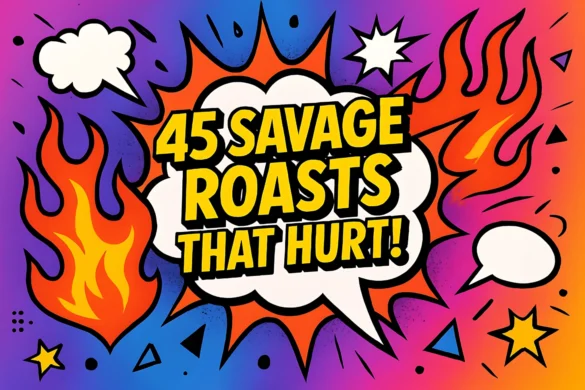Christmas murder mystery entertainment fascinates holiday party planners these days. The excitement keeps building for the upcoming $1,000,000 production that releases on December 7, 2025 in the United States. Party hosts now look for more engaging and interactive holiday experiences that go beyond traditional gatherings.
A murder mystery Christmas party is a chance to revolutionize standard festivities into unforgettable events. Businesses and entrepreneurs can host memorable team-building experiences through Christmas murder mystery games that blend entertainment with strategic thinking perfectly. On top of that, these themed parties help develop collaboration, problem-solving, and creative participation – valuable skills in both professional and social settings. This piece will give you the tools to arrange a suspense-filled holiday event that keeps everyone guessing until the final reveal, whether you plan a Christmas murder mystery dinner for colleagues or a fully immersive Christmas themed murder mystery party for friends.

Choose Your Christmas Murder Mystery Theme
The right theme for your Christmas murder mystery event creates the foundation for an unforgettable holiday experience. Your theme choice builds immersion and excitement. This framework guides character development, plot progression, and decor decisions that will keep your guests engaged throughout the event.
Classic Whodunit at the North Pole
Christmas mysteries can turn your gathering into a winter wonderland of suspense where holiday cheer meets criminal intrigue. Players become North Pole inhabitants who work hard to prepare for Christmas until disaster strikes. The cast includes Santa Claus as operations leader, Mrs. Claus as protective matriarch, head elves, toy designers, and reindeer – each with unique personalities and motives.
“Ho Ho Homicide” brings this theme to life as Santa’s team faces productivity issues that threaten his legacy. Tensions build until one character takes drastic action, and guests must figure out “if it was the audacious elf who believes they could run the workshop better” or perhaps “the unwavering wife who will do anything to protect her family”. This format works great with larger groups since North Pole settings naturally fit many characters with distinct roles.
Santa’s Workshop Sabotage
Santa’s Workshop makes a perfect setting for groups that prefer theft or sabotage over murder in their Christmas mystery games. “A Christmas Sabotage” features an evil corporation’s elf saboteur in Santa’s Workshop. “Santa’s North Pole Workshop Heist” lets guests question arctic inhabitants like elves and reindeer to solve a shocking theft.
These scenarios blend festive elements with detective work perfectly. Families and groups who find murder too intense will enjoy these alternatives. A popular version shows the season’s hottest toy design plans to the Christmas Board of Directors and department elves—until something goes wrong.
Murder at the Christmas Gala
Christmas galas create an elegant backdrop where guests can dress their best for murder mystery events. Rich characters, lavish decorations, and formal attire set the stage for holiday intrigue and betrayal.
“Murder at the Christmas Feast” brings guests to Mullmoor Manor where they find a body that throws the celebration into chaos. Bob Scratchitt’s Christmas Eve party at his manor takes a dark turn after guests find his dead body. Participants can enjoy holiday glamor while they uncover sinister plots beneath the festive surface.
The Elf Who Knew Too Much
Elves make perfect victims—or suspects—especially when they hold dangerous knowledge. Their insider position in Christmas operations gives them access to secrets that could threaten powerful figures.
“The Elf Who Stole Christmas” features a chaotic workshop after Santa’s naughty and nice list vanishes. Guests must find the guilty elf. Another mystery shows Elven Krimwald murdered in Santa’s private office, leaving clues like “Santa’s naughty and nice list, a half-eaten candy cane, a red ribbon, and some cookie crumbs”.
These mysteries often include characters like “The Elf Who Knew Too Much” with vital information that puts them at risk. Players must determine which secrets were worth killing for during the most wonderful time of the year.
Create Memorable Characters for Your Guests
Characters are the heart of any successful Christmas murder mystery party. When you create engaging roles, participants become active storytellers who push the story forward through their choices and interactions.
Assigning Roles: From Santa to Suspects
The way you assign characters will shape how guests connect and how well your party works. Your best approach is to wait for RSVPs before giving out roles. Give participants at least two weeks to prepare so they can really get into their characters.
Match each role to your guest’s personality. Your outgoing friends will shine with dramatic characters. Shy guests might enjoy characters that let them solve mysteries without being the center of attention. You can create “bystander” roles for guests who want to dress up and mingle without active participation.
Most Christmas murder mystery games come with gender-flexible roles that work for anyone, whatever the character’s specified gender. This makes it much easier to work with different guest lists. Popular character types include:
- North Pole Leadership: Santa Klause (reluctant new Father Christmas), Mrs. Klause (hates baking cookies), Grunch (Christmas-hater)
- Elf Personnel: Billie the Elf (grown too tall), Jingle (Santa’s right-hand elf), Jangle (toy designer)
- Holiday Characters: Cindy Lou Woo (dislikes roast beast), Captain Nutcracker (tired of waltzing), Rue Dolph (reindeer with shiny nose)
Balancing Humor and Suspense
Great Christmas murder mystery characters mix tension with laughs. Add quirky traits to each character—like a barber who wants to remove moles during haircuts, or a beautician with a lap-jumping chihuahua. These odd details add to the story without spoiling the mystery.
Characters who are sharp-tongued or witty bring natural humor to the game. Ruth Zardo works well as a grumpy, foul-mouthed poet who insults everyone—even friends. The best laughs come from character personalities rather than forced jokes.
Humor should feel natural at your murder mystery Christmas party. You’ve found the sweet spot when a funny moment only works with one specific character in one situation. This keeps everything flowing smoothly throughout your event.

Using Character Cards and Backstories
Detailed character sheets help guests direct their roles. Each player needs background information, hidden secrets, character relationships, and specific goals.
Backstories add depth by showing why characters act the way they do. Focus on their “character wounds”—past events that changed their lives. These key moments shape how characters think and behave, making them real and interesting.
Your Christmas murder mystery dinner becomes more fun when character cards include:
- Unique quirks or catchphrases (“I’ll turn you into a toad!” for a magician)
- Personal goals tied to the main mystery
- Secret information only that character knows
- Costume and prop suggestions
With well-developed characters and smart role assignments, your Christmas murder mystery game becomes more than just solving puzzles. Your guests will love stepping into their roles and creating an unforgettable holiday experience together.
Design the Perfect Setting and Atmosphere
Your event’s atmosphere sets the stage for an unforgettable Christmas murder mystery experience. The right environment turns a regular party into a thrilling adventure. Every shadow might hide a clue, and each sound adds to the mystery.
Decor Ideas for a Murder Mystery Christmas Party
You’ll need smart decoration choices to turn your space into a Christmas wonderland with mysterious elements. Start with classic Christmas decorations as your base: a decorated tree, festive wreaths, stockings, and garlands. Then add murder mystery touches that hint at the crime.
Here are some great decorative elements for North Pole themed mysteries:
- Christmas tree with character-specific ornaments
- “North Pole” and “Reindeer Crossing” signs at the entrance
- Cozy Christmas candles and fairy lights for mood
- Character-specific areas (Elf Clubhouse, Mrs. Claus’ Kitchen, Toy Workshop)
- Small stockings showing guests’ character names
An elegant Christmas Gala mystery needs a sophisticated touch. Try sparkling ornaments in large bowls as centerpieces. Place wrapped empty gift boxes around the space and use festive tablecloths. Christmas wrapping paper makes great placemats or table runners without breaking the bank.
Lighting and Music to Set the Mood
Nothing sets the tone faster than good lighting. These techniques work well for Christmas murder mystery parties:
Keep your overhead lights low and use strategic lighting instead. String lights in wine jugs or under sheer tablecloths create magic. Small lights under furniture cast dramatic shadows that add mystery. Red, green, or purple bulbs create the perfect atmosphere for a murder mystery Christmas dinner.
Your music should match the theme perfectly. Christmas music works well, but it needs to fit your specific story. Victorian Christmas mysteries come alive with traditional carols. Make sure your playlist runs long enough for the whole party. Keep audio clues or sound effects on a separate device so they won’t mix with background music.
Costume Suggestions for Immersion
The right costumes can turn a fun party into an amazing experience. While not required, proper attire helps players become their characters.
North Pole themes work great with Santa suits, elf costumes, reindeer outfits (brown clothes with antler headbands), or snowman attire (white clothes with top hats). Christmas Gala mysteries shine with velvet dresses in deep green or red.
Give a prize for the best costume to spark creativity. Each role comes with style tips, but guests should wear what makes them feel most like their character. Even simple tinsel-covered outfits or cozy winter pajamas work well. Simple additions like vintage jewelry, watches, tartan scarves, or Sherlock-style hats can turn regular clothes into perfect costumes.
Plot Twists and Clues to Keep Everyone Guessing
A Christmas murder mystery game’s success depends on plot development that keeps guests interested throughout the experience. Your guests will be surprised and satisfied when you create an intriguing mystery with carefully planned clues, red herrings, and a well-timed reveal.
How to Plant Red Herrings
Red herrings should misdirect guests without causing frustration. Start by giving innocent characters compelling reasons to commit murder. A character might have been cheated on by the victim or seen arguing with them before their death. The next step involves creating false evidence that points to these innocent people.
A powerful technique hides motives where everyone can see them. Your Christmas murder mystery party might feature a character who openly hated Santa’s management style or an elf who always complained about working conditions. These obvious suspects make perfect red herrings because guests usually expect more complex solutions.
Your genuine clues should blend with several red herrings. Even the most watchful guests will find it hard to separate useful information from clever misdirection. The red herrings must reach a resolution through alibis or new evidence that clears previously suspicious characters.
Using Clue Cards and Secret Objectives
Physical clue cards move your Christmas murder mystery forward by revealing structured information at key moments. Most store-bought Christmas murder mystery games use round-based clue distribution. These typically include pre-murder clues (Round 1), post-murder investigation (Round 2), and solution revelations (Round 3).
Secret objectives add complexity by giving characters personal goals beyond solving the murder. A “Secret Alliances Challenge” lets guests collect alliance cards from others without showing their existing partnerships. This extra game layer keeps everyone active, especially those less involved in the main mystery.
Custom clues should serve the narrative. Random information that doesn’t help solve the crime or advance the story should be avoided.
Timing the Big Reveal
Your Christmas murder mystery dinner party’s success relies on proper pacing that builds to a satisfying climax. Each investigation round needs 20-45 minutes. Watch how guests progress through their information to gage natural completion points.
Hosts often make the mistake of rushing things along. Let the mystery unfold at its own pace. The final reveal becomes more dramatic when you dim the lights, quiet the room, and ask one character to read the solution.
The game’s momentum needs maintenance without controlling every detail. When conversations slow down, introduce new information. Someone might “find” extra evidence or uncover a suspicious letter.
Free and Paid Resources to Get You Started
Quality resources for your Christmas murder mystery event are available at every price point. You’ll find everything from free options to premium packages that help hosts create memorable experiences without spending too much.
Where to Find Free Christmas Murder Mystery Games
The internet has plenty of no-cost options for resourceful hosts. Playing with Murder gives away several downloadable kits, including “Jazz Age Jeopardy” and “Malachai Stout’s Family Reunion” – perfect for 6-15 players. “The Emergency Santa Claus Mystery” brings Christmas spirit with a week-long whodunit experience through daily puzzles. Here are more free resources you can use:
- PrintMysteries has murder mystery posters you can adapt to match your Christmas theme
- Canva lets you create character cards and invitations
- “The Romanian Uranium Mystery” comes with a scripted performance where your audience can join in
Top Rated Printable Kits
Paid options give you a more complete experience. Etsy sellers pack their Christmas murder mystery game kits with rich materials. One standout package has 450+ Christmas-themed ideas and templates for characters, clues, motives, and props. Masters of Mystery creates special Christmas collections. Night of Mystery offers 32+ themed games with step-by-step hosting guides.
Customizing Templates for Your Party
Personal touches make events memorable, so many hosts adapt existing templates. You can add Christmas flair to names, clues, and motives. Your planning should include character guides, action cards, and vote cards that match your chosen theme. A solid storyline and strong characters turn simple templates into unique Christmas murder mystery experiences.
Christmas murder mystery parties go way beyond the reach and influence of regular holiday entertainment. These immersive experiences turn routine gatherings into unforgettable events packed with suspense, collaboration, and creative problem-solving. Your guests will love the chance to break free from their everyday roles and take on new personas during the festive season. The setting could be anything – a North Pole whodunit, workshop sabotage, elegant gala, or elf-centered intrigue.
These interactive experiences benefit businesses by encouraging teamwork and providing a refreshing alternative to traditional corporate gatherings. Mystery-solving requires strategic thinking that mirrors workplace challenges, but in a much more entertaining way. Your employees will remember these unique celebrations long after regular holiday parties fade from memory.
Success depends on careful planning. Guest personalities should match their character assignments so everyone feels both comfortable and challenged in their roles. The right mix of themed decorations, strategic lighting, and appropriate music creates a truly immersive experience. Well-placed clues and red herrings keep everyone interested throughout the event, while good pacing builds excitement toward the big reveal.
Both novice and experienced hosts can find many resources. Free options give solid foundations to those trying out the concept, while premium packages provide detailed materials to hosts who want polished experiences. The investment pays off through stronger relationships and memorable moments.
This holiday season is your chance to raise your gathering above ordinary festivities. Your guests will without doubt enjoy using their deductive reasoning skills in festive surroundings. Make your next Christmas celebration a murder mystery event that keeps everyone guessing until the final dramatic reveal.
Here are some FAQs about Christmas Murder Mystery:
Are there any Christmas murder mystery movies?
Yes, there are several Christmas murder mystery movies including “Knives Out: A Glass Onion” which has holiday elements and “The Pale Blue Eye” set during the Christmas season. These films combine festive settings with suspenseful whodunit plots that can inspire your own christmas murder mystery party themes.
What are the 12 hilarious Christmas party games?
The 12 hilarious Christmas party games typically include activities like White Elephant gift exchange, Christmas charades, and holiday-themed scavenger hunts. While these are fun, a murder mystery christmas party offers a more immersive and engaging experience that tells a complete story throughout the evening.
How to host a Christmas Murder Mystery Party?
To host a Christmas Murder Mystery Party, you need to choose a themed kit, assign character roles to guests, and decorate with festive crime scene elements. A successful murder mystery christmas parties require careful planning of the storyline, clues, and festive refreshments that match your theme.
What is the most famous murder mystery of all time?
The most famous murder mystery of all time is arguably Agatha Christie’s “Murder on the Orient Express” featuring Hercule Poirot. While not Christmas-themed, its intricate plot structure can inspire your own christmas murder mystery game with complex characters and surprising revelations.
What are the top 5 best Christmas movies?
The top 5 best Christmas movies typically include “It’s a Wonderful Life,” “Home Alone,” “A Christmas Story,” “Elf,” and “National Lampoon’s Christmas Vacation.” These holiday classics provide different moods that could inspire themes for your murder mystery christmas party scenarios.
What was the banned Christmas horror movie?
“Silent Night, Deadly Night” was a controversial Christmas horror movie that was banned from many theaters upon release due to its killer Santa premise. This controversial concept could inspire an edgy theme for a christmas murder mystery party for adult guests.
What is a dirty Christmas party?
A dirty Christmas party typically involves adult-themed games, risqué gift exchanges, and more mature entertainment compared to traditional family gatherings. This concept differs from a murder mystery christmas parties which focuses on solving a fictional crime while maintaining a festive atmosphere.
How do I make Christmas fun for adults?
You can make Christmas fun for adults by hosting themed parties, cocktail-making classes, or interactive games like a christmas murder mystery game. These activities provide engaging entertainment that encourages social interaction and creates memorable experiences beyond traditional holiday gatherings.
How to play Dirty Christmas?
Dirty Christmas is typically a naughty gift exchange game where participants bring inappropriate or humorous presents. This is different from a christmas murder mystery party which involves character acting, clue solving, and dramatic reveals throughout the evening.



